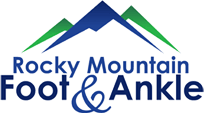What Can I Do to Help Overpronation?
Wear the right shoes
Shoes that work best for overpronators include stability shoes or shoes labeled as “motion control.” This type of footwear will help distribute the impact of your gait more evenly and reduce the pronation. The shoe may have good cushioning and arch support suited to flat feet. You can find athletic shoes specifically designed for overpronators.
Orthotics
Adding inserts designed to help correct overpronation may be helpful. Custom-built orthotics will support your arch and improve the way your foot makes contact with the ground.
Stretches and exercises
Some stretches and exercises may help relieve discomfort or pain caused by overpronation by helping to improve your gait or raising and strengthening your arches. Here are some useful exercises to try.
Physical therapy
Sessions with a physical therapist may help to improve your gait over time and reduce your tendency to overpronate.
How Can I Tell for Sure If I Overpronate?
Issues resulting from overpronation can also have other causes, so get your feet looked at by a podiatrist. A podiatrist will examine your feet and test your gait to determine if you are overpronating. If you live in our area, one of our trained podiatrists at Rocky Mountain Foot & Ankle will accurately diagnose the cause of your issues. Whether we find you are indeed an overpronator or that some other problem is in play, we will work to get you as much relief as possible. So, don’t live in doubt any longer – let us discover whether or not you are overpronating.
Do You Or A Family Member Need The Help Of An Experienced Podiatrist In The Caldwell Or Meridian, Idaho Area?
If you're seeking the help of an experienced podiatrist you owe it to yourself to speak with our doctors as soon as possible. Please feel free to contact us online or call our office directly at 208.855.5955 to schedule your appointment. We service all areas surrounding Meridian, Idaho as well as all areas in the Caldwell, Idaho area. We look forward to helping you!


 The word “pronation” refers to the natural motion of the foot during walking and running. In a previous article, I discussed
The word “pronation” refers to the natural motion of the foot during walking and running. In a previous article, I discussed 